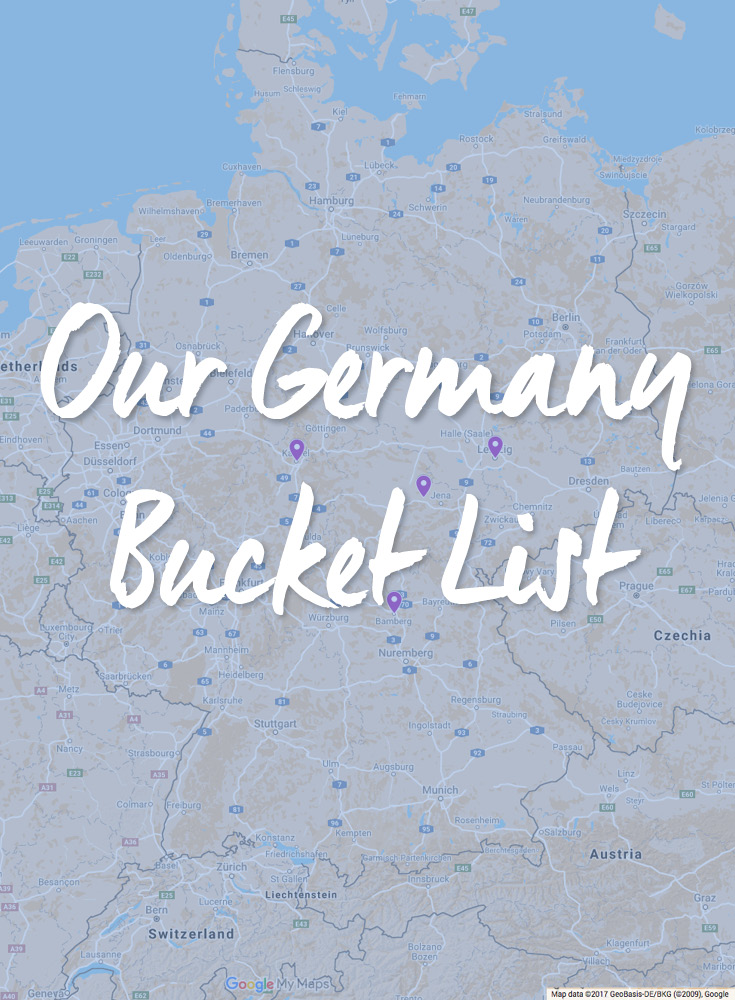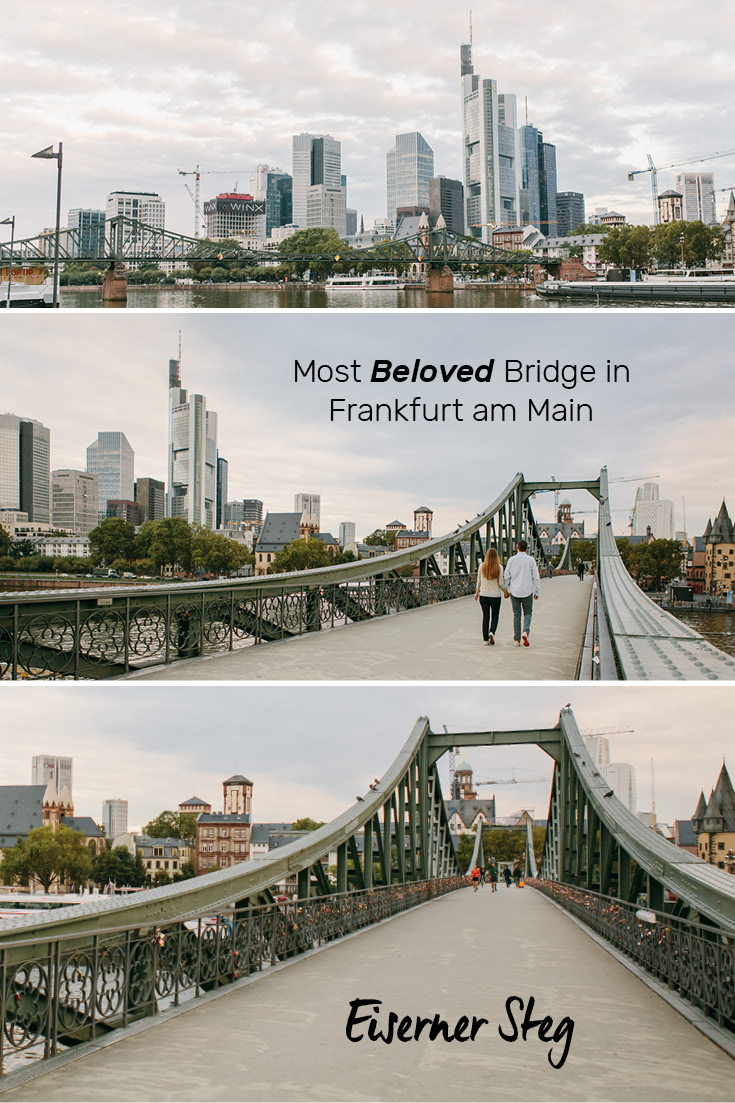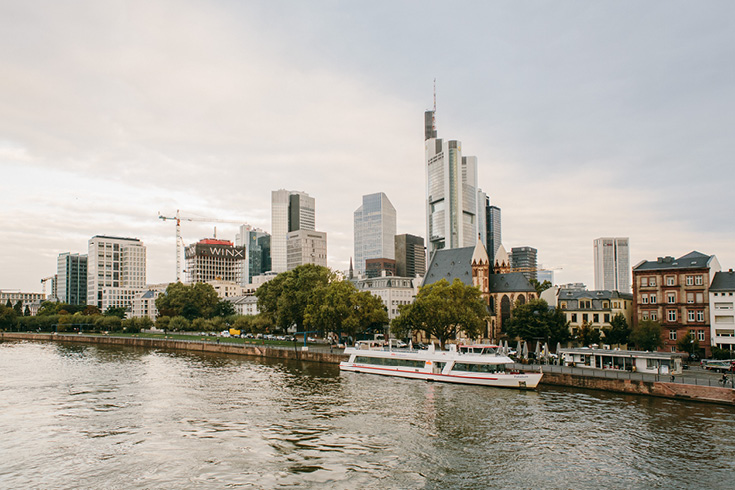Disclosure: Please note that some links are affiliate links, and at no additional cost to you, we earn a commission if you make a purchase.
If you would like to support this website in some way, using these links will help do exactly that.
Our Germany Bucket List has a variety of sources. Some are from German history books that mention a particular city again and again, others because they have a specific castle that has captured my attention, perhaps they have a polar bear residing in the zoo, or I develop a longing to go somewhere from Pinterest. When we are in the early trip planning phase, often I refer back to pins I’ve saved from other travel bloggers. We're so excited that in the next two weeks, we’re visiting our top 4 on our bucket list, Kassel, Bamberg, Leipzig, and Weimar.

Kassel, a city in the central German state of Hesse
It has a castle that popped up on my radar when I read “Why You Should Visit Wilhelmshöhe Park in Kassel, Germany,” by Tamara for her blog Globe Guide. Her photos captured my imagination and Kassel was swiftly on my list. The grand opening of the Grimm World museum a few weeks ago and plans were put in motion! We’re planning on doing a family day trip with Sebastian’s parents and his sister, since it's only a two hour drive from their home near Frankfurt am Main. Finally, we’re going to Kassel!
Bamberg, a town in southeastern German state of Bavaria
Lorelei of California Globetrotter using the word ‘Bumbling’ in her title “Bumbling Around in Bamberg”, grabbed my attention. I’m a sucker for innovative verb usage! Wow, what a half-timbered beauty, and I can’t wait to take my own photos of the Old Town Hall built atop the Regnitz River. I’m also fascinated by the Market Gardeners’ District that feature active vegetable fields run by two dozen families that is an ongoing example of an early medieval town, and significantly helped Bamberg achieve Unesco World Heritage status.
Leipzig is a city in the eastern German state of Saxony
I first heard about Leipzig in regards to their zoo, that it was exemplary. I did some digging around on Pinterest and found Adelina’s article on her blog Pack Me To, “A Day in Leipzig: History, Bach, and Cake,” and decided to keep digging. It looked like a city that could our entire family entertained for more than a few days. Beyond the Leipzig Zoo, we’re planning on visiting the Museum of Fine Arts (Museum der bilden Künste), Time Historical Forum (Zeitgeschichtliches Forum, charts the history of GDR from division through reunification), and visiting the German National Library. Add in a plethora of historically important cafes, churches, and town squares and we’re going to have an epic trip!
Weimar, a city in the east central German state of Thuringia
This city just won’t be ignored. It's mentioned as consistently as Berlin in my history books. Goethe lived there. Schiller lived there. Nitzche lived there. Weimar is not a day trip city, it's responsible for such a wealth of German culture that you should plan several days to really ‘get it’. I loved the overview and photography that Russell of Roaming Required shared in “Discover Germany’s Cultural Heartland-Weimar”. If you’re fascinated by German history and culture, you’ll want to put Weimar on your list too.
Our bags are packed! Multiple color copies of our itineraries are printed and in page protectors. Yes, page protectors! That’s how we roll. We’re so excited for our annual September trip to Germany! As a result, our blog is on vacation for two weeks, and we look forward to returning the first week of October refreshed and refueled with adventures in Germany. Do you have any suggestions for us before we visit Kassel, Bamberg, Leipzig, and Weimar? What cities in Germany are on your bucket list and why? Let us know in the comments below or send us an email.
Follow Along
If you enjoyed this article, or these topics sound interesting to you, you'll love our weekly newsletter. You'll receive the newest posts each week and exclusive access to free planning resources like ‘Packing List & Tips for 2 Weeks in Germany’ and ‘Everything You Need to Rent a Car in Germany’.
Thank you for reading!


Frankfurt am Main is a strong, logical city largely due to the generosity and foresight of its own citizens. They’re a self-reliant group. In 1867, weary of the long, roundabout trek with an out of the way bridge in order to cross from downtown to the neighborhood across the river to Sachsenhausen, a group collected money to build the Eiserner Steg, Iron Bridge. After two years of construction, the bridge was open. There was a toll of one Kreuzer until 1885 when the city of Frankfurt took over management of the bridge. The bridge was replaced and enlarged in 1912, but then completely destroyed during World War II. By 1946 the bridge was rebuilt, and recently renovated in 1993.
The view of the Frankfurt am Main, ‘Mainhattan’ skyline is a beautiful sight from the Eiserner Steg, and while it is pedestrian-only, it's the most beloved bridge in Frankfurt.

Follow Along
If you enjoyed this article, or these topics sound interesting to you, you'll love our weekly newsletter. You'll receive the newest posts each week and exclusive access to free planning resources like ‘Packing List & Tips for 2 Weeks in Germany’ and ‘Everything You Need to Rent a Car in Germany’.
Thank you for reading!

